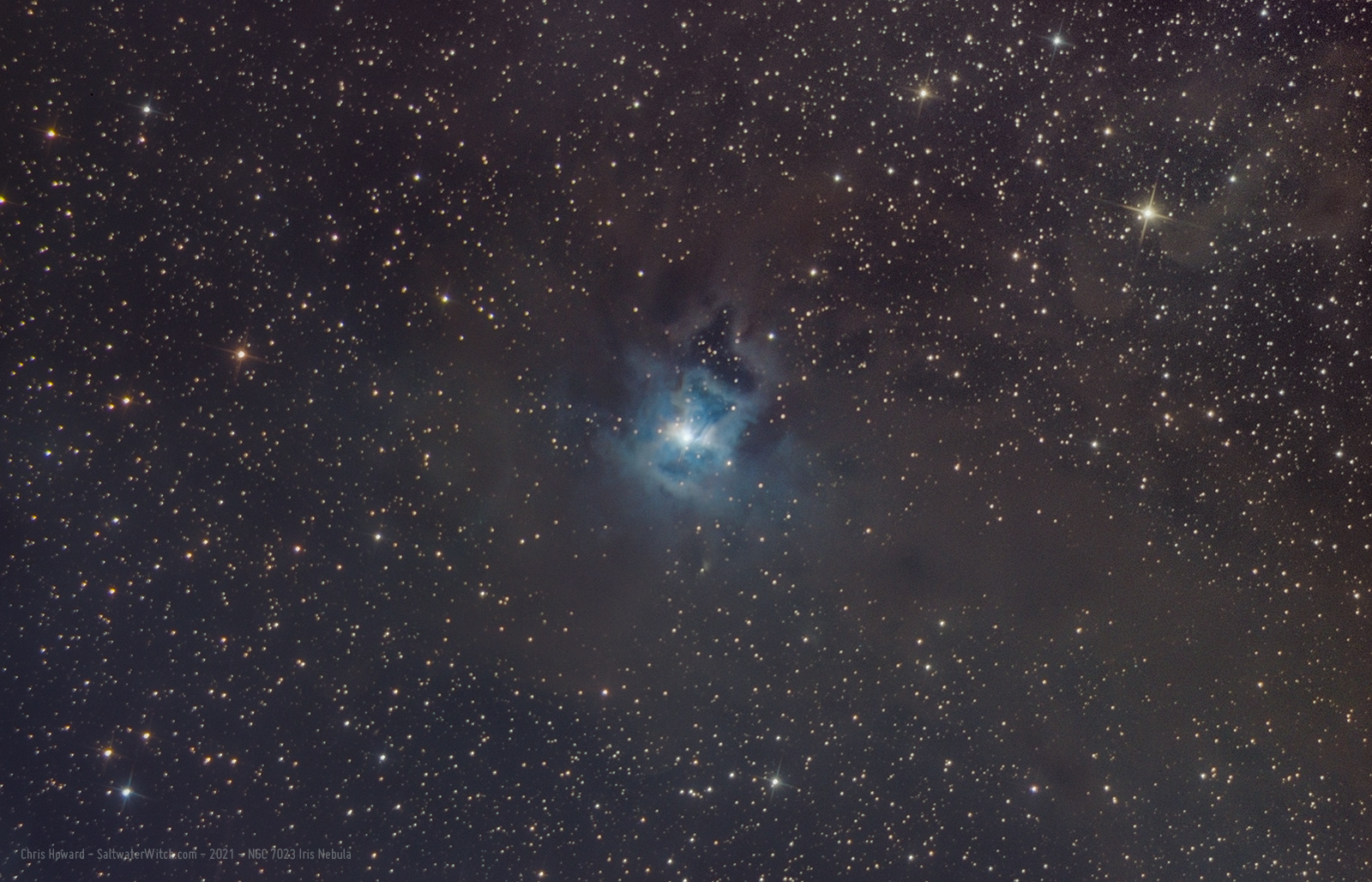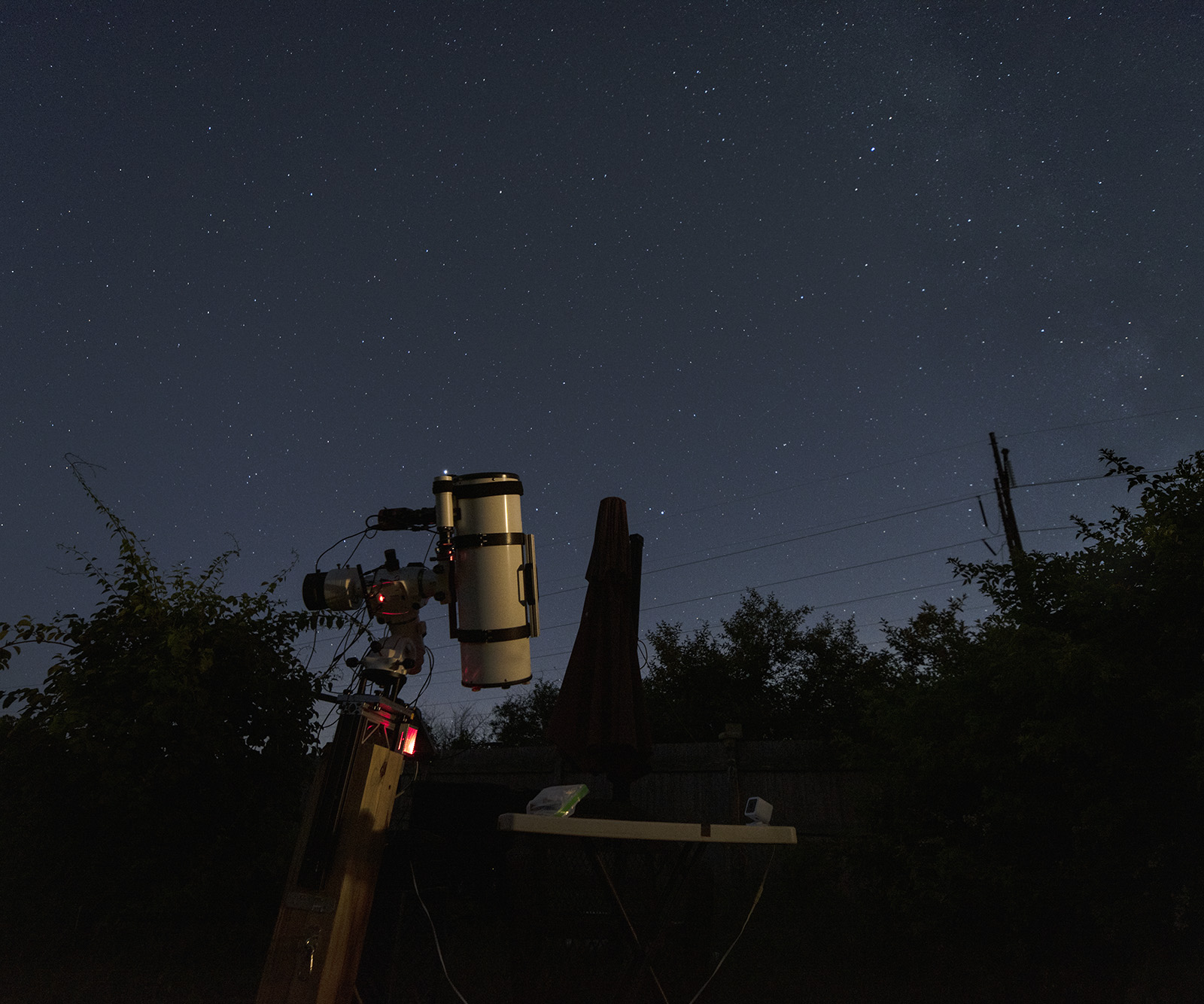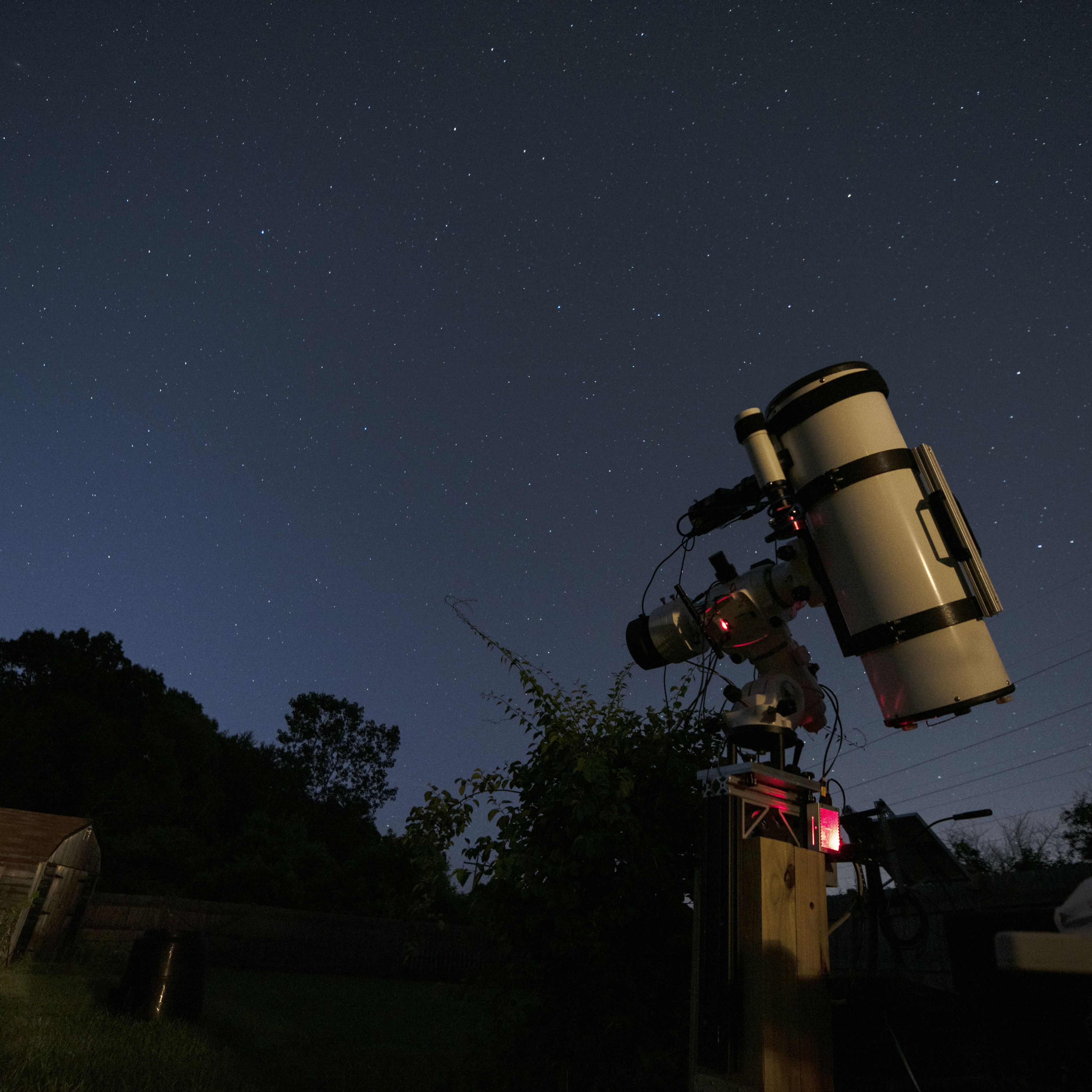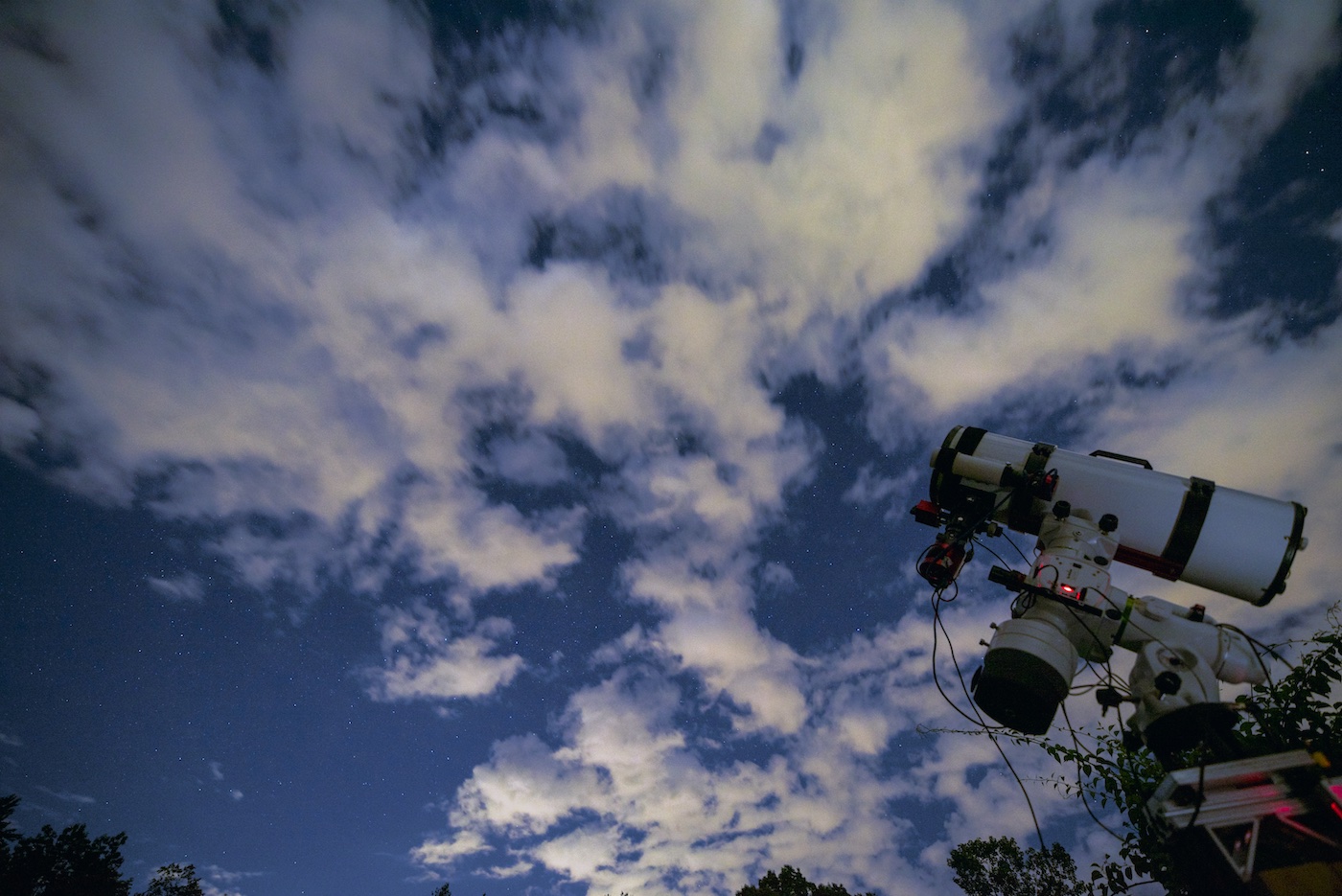First Light with the Apertura Newtonian
June 17, 2021
NGC 7023, the Iris Nebula, is a beautiful reflection nebula in the constellation Cepheus. Unlike emission nebulas, which emit their own light and radiation, reflection nebulae are mostly dark and what we observe is starlight scattering through or illuminating clouds of interstellar dust and gas. M45, the Pleiades, is one of the most famous reflection nebulae, with a batch of violently bright blue-white stars lighting up the whole neighborhood. The Iris, in contrast, is surrounded by denser and darker clouds and does not have the intensity of the "seven sisters", the star cluster that makes up the Pleiades. The Iris Nebula is about 1,300 light-years away and that core circular region is about six light-years across. And just to give you a sense of how big the Iris is, the diameter is around 35 trillion miles, or over 56 trillion kilometers. So, pretty good size.
I think the Iris Nebula came out rather well for the first time with this new scope, the Apertura 8" f/4 Newtonian Imager. The stars are a bit wonky as I'm still playing with the coma corrector distance. But overall I had a blast with the 800mm focal length of this OTA. It's perfectly matched with the ZWO ASI071's APS-C sensor and large-ish pixels (4.78m).
Notes: 51 x 240 second subs, no filters. Apertura 8 inch f/4 800m FL Imaging Newtonian, ZWO ASI071MC color camera, GSO Coma Corrector, SkyWatcher EQ6-R Pro mount, Stellarmate/Raspberry Pi 4 running INDI/Ekos/KStars.

Some shots of the Apertura Newt in action--during the imaging run for the Iris Nebula:


And this is what the skies looked like until after midnight:

